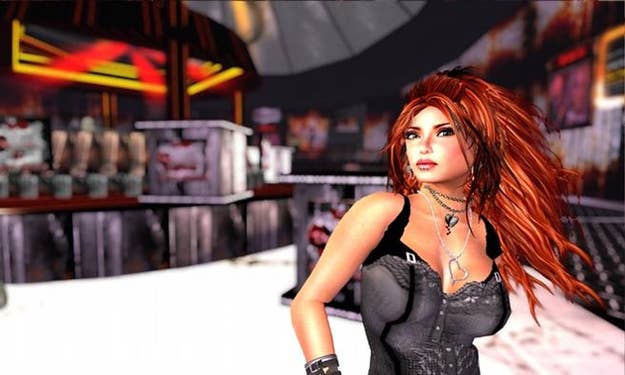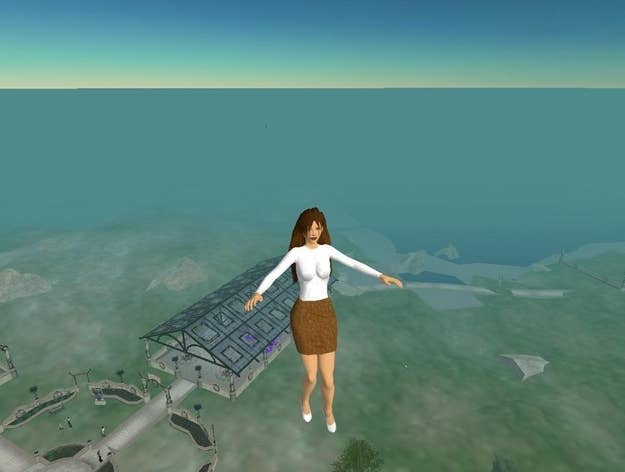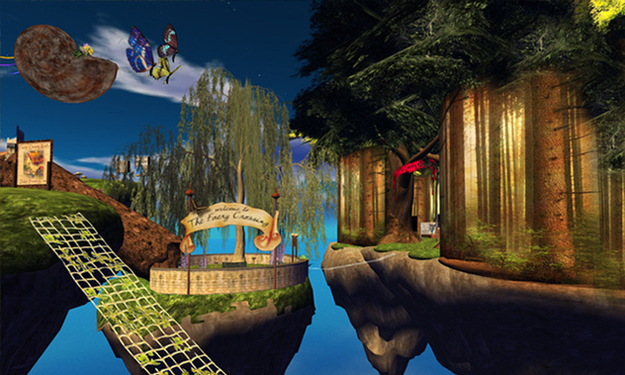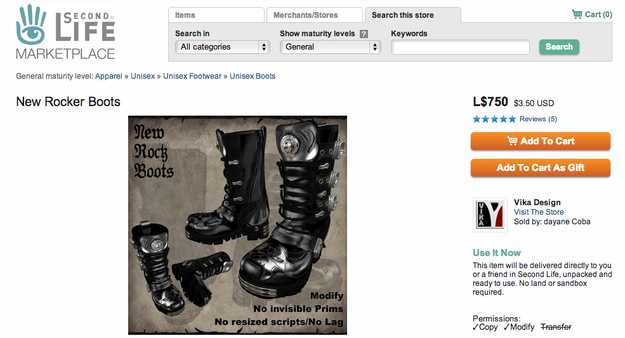
From 2004 to 2010, this design lead worked on the marketing team for Linden Lab, the company behind Second Life, the virtual world that became popular in the mid-2000s. For a little while, it seemed that there was no limit to possibilities of the animated, avatar-filled world: Reuters opened a news bureau there (shuttered in 2008); over a million people signed up; a huge economy of virtual goods was established. We talked to this worker about what it was like during the “golden age” of Linden Lab, when going to work meant logging on to a virtual world and flying around an alternate universe.
I first heard about Second Life when I took a friend to a job fair in early 2004. He was graduating college and wanted to get into computer games, animation and graphics. While taking a break in the lobby, a guy was handing out discs for this "game" called Second Life.
His initial description sounded like the Metaverse from Snow Crash. My friend and I barraged him with questions: "Can you build stuff? Can you make stuff? Can you blow stuff up?” He said yes to just about every question we had. My friend and I decided to bail on the rest of the conference and check this "game" out. I went home and immediately started messing around with it. Within a month or so, I was working for Linden Lab.

At first, there were only about 20 to 30 people at the company. I was the only marketing creative and my job consisted of everything from redesigning the Second Life homepage to capturing all the marketing images and plotting scrappy-startup-style guerilla marketing efforts with my boss. The stuff we got away with still makes me smile.
During the first few months of my employment I would spend a lot of personal time in SL. I was still an unapologetic fanboy and saw enormous potential in the product as a creative and communication medium. There were rough edges, of course, but it was an inspiring and attractive opportunity.
In Second Life, all Linden employees have the last name "Linden." No one else has that last name; it's solely intended to identify employees of Linden Lab. And when employees were in Second Life, it meant instant rock star status. For an average guy to be thrown into an experience like this, it was pretty wild. In the early days, residents would stop whatever they were doing to gravitate towards you, like you were a celebrity, or in some cases even a god. At first it was very strange, always being on display. Having been in SL before becoming a Linden, I had friends I'd hang out with, build stuff with, chat with. I was careful not to share with those friends when I started at Linden — I was interested to see how the two identities played out. Although I behaved the same on either account, people seemed drawn to the "Linden" name. It felt pretty Batman/Bruce Wayne.
One of the things that I thought was great about Second Life is it appealed to many people who normally would not feel comfortable in a social situation. Sometimes, it was because of physical limitations or crippling social anxiety, and sometimes it was just simple introversion. SL offered plug-and-play social interaction, which opened the possibilities for people who previously would have avoid socializing.

During the "golden age" we had the freedom as a company to rapidly innovate on the platform, and on our marketing approach. This truly set the foundation that turned SL into arguably the most powerful creative/social medium in the world. There were rules to keep peace and to keep people in check in Second Life, but Resident/Linden interaction was highly encouraged. Which in turn allowed us an insight into what the Residents wanted and what the product needed.
In one of the first interactions I had with Second Life as an employee, I had to go into Second Life and let this resident know that he had a won a contest — a T-shirt and some other prizes. He looked kind of like Tony the Tiger: He had a tiger face, and tiger stripes. His response was pretty laid back and I told him I’d be in touch to get more details on where to send the T-shirt and take his picture to put up on the website.
So, the next day, I hop into Second Life to wrap up the details. First, I located him on the map, and teleported directly to him. Then I realized I should've asked before doing so. Suddenly, I’ve landed next to a couch upon which he's spread eagle, naked. With an also-naked zebra woman straddling him. I felt like I had walked in on someone in real life during an intimate moment. It wasn't long before this sort of thing became normal, but on the first occurrence, the "oh shit" awkwardness was real.

As the number of users climbed, my perspective on SL didn't change. It felt very validating. Like the rest of the world was slowly realizing what an amazing place we were creating. The company started to become more mainstream and the media started noticing us around 2005-2006.
Although it's probably easier to find a senator with a seedier sex life, reporters often latched onto the idea of people "having" digital sex. If there was anything to attribute the arrival of digital sex in SL, it was an update that landed around 2004. It enabled the import of BVH files [a standard animation format]. It was definitely a game-changer for Second Life; it truly turned it into different experience. Users could now create animations for anything: ice skating, running, dancing, scuba diving, and, of course, sex. At first, all interactions were held to the inherent restrictions of a limited set default animations — contrary to rumor, belief, or hidden desire, there were no sex animations built into the client.
Linden broke ground in that the user owns their own intellectual property. I have no idea what's embedded in legalese nowadays, but it was revolutionary in letting people know that they are not creating things for a company who was going to usurp their IP. And also, practically, it freed up Linden Lab to not police every single piece of content, which would have been untenable.
View this video on YouTube
Ahhhhhh, Newt Gingrich dropping into Second Life for a talk. For a few years, it was standard for celebrities, musicians, journalists and advertisers to be trolling around, looking for an audience.
As the company started to mature, more policy and procedure was put in place. Some of it was needed, but it was apparent that it was having an impact on the culture we had all grown to take for granted.
Overnight we had found ourselves in a very top-heavy company. The number of VP and Director level folks had mushroomed. Some were fantastic additions that brought much needed maturity and structure that contributed to the strengthening of a sustainable business. So in 2010 I decided to leave Linden Lab to start my own company. There were about 400 employees when I left. Shortly thereafter there was a sizable exodus.
Although I no longer have my finger on the pulse of Second Life, my feeling of its impact and contribution as the most powerful social/creation/commerce engine hasn't faded in the least.
As told to Reyhan Harmanci. If you'd like to contribute your story of working in the tech world, please be in touch: reyhan.harmanci@buzzfeed.com.

